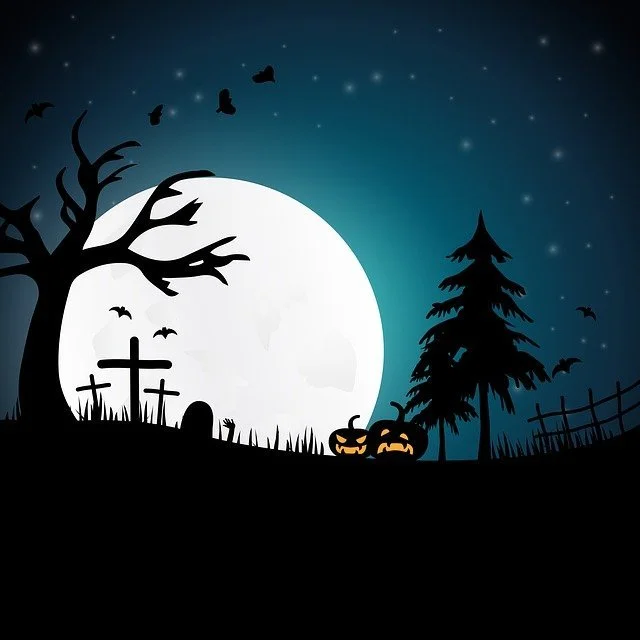In the United States, for Halloween 2024, Halloween candy sales averaged somewhere between $3.5 billion and $4.1 billion. Even with inflation, these are staggering numbers. What’s even more unbelievable is that this represents a decrease from 2023 sales. Households spent an average of about $30.89 on Halloween candy.
Chocolate bars are the most popular candy of trick or treaters, and Reese’s Peanut Butter Cups are expected to be the most popular candy followed closely by M&Ms, Kit Kat Bars, and Snickers. Sour Patch Kids and Haribo Goldbears (gummy bears) are expected to be the most popular non-chocolate treats.
If the current government shutdown persists these figures could change drastically as consumers tighten their belts. It may be an unpopular opinion, but I don’t think less candy would be so bad.
Trick or Treating for UNICEF is still a thing, and it’s needed now more than ever. Go to this website for more details, https://www.unicefusa.org/trick-or-treat
Make sure to get the approved collection kit, so people know it’s legitimate.
If you celebrate Halloween, there is more to this holiday than simply over-indulging on candy.
Here are a few Halloween History facts for you.
1. Fear of Halloween is known as Samhainophobia.
2. Halloween, also known as All Hallows’ Eve and All Saint’s Day was originally a Druid holiday in Ireland, Britain, and Northern Europe celebrated by the Celts on the last day of the Celtic calendar (October 31).
3. Samhain (summer’s end) was a harvest festival with large sacred bonfires. Halloween has its roots with the Feast of Samhain held to honor the dead. Celts believed the souls of the dead roamed the streets of the villages during Samhain. To appease any unfriendly spirits and protect the next year’s harvest, they left treats outside to pacify the evil spirits on the feast of Samhain. Celts wore masks and costumes to disguise themselves on this night, so evil spirits wouldn’t know they were human.
4. “Souling” is the Christian custom of baking and sharing soul cakes for all Christian souls. The poor (especially the children) went door to door on Halloween collecting soul cakes in exchange for praying for the souls of the givers’ friends and relatives. These customs evolved into trick-or-treating.
5. Wealthier adults and children usually attended parties wearing costumes or masks and participated in fun activities such as bobbing for apples, dancing, or making jack-o-lanterns.
6. Jack-o-lanterns which originated in Ireland were hollowed out turnips with candles inserted to keep evil spirits away during the Feast of Samhain.
7. European immigrants brought the observance of Halloween to the United States. They celebrated the harvest around bonfires telling scary ghost stories, singing, dancing, and telling fortunes.
8. Pumpkins, which are native to North America, soon replaced turnips for making jack-o-lanterns because they were larger and much easier to hollow out.
9. Trick or treating door to door in the United States started about 100 years ago. Previously, youths celebrated by causing mischief, playing pranks, or attending parties. It became popular nationwide by the late 1940’s. Treats were commonly coins, nuts, fruits, cookies, cakes, or toys.
10. Candy makers typically ignored Halloween and advertised heavily for Easter and Christmas until the late 1950s when concerns about tainted treats made the idea of giving out factory sealed treats seem safer. Candy makers started making smaller, individually wrapped, inexpensive versions of their treats especially for Halloween.
Halloween has evolved from a time of superstitions, ghosts, goblins, and evil spirits to an evening for fun, putting on costumes, trick-or-treating, and having theme parties.
Halloween Safety Guidelines:
· Wear properly fitting flame retardant costumes and comfortable shoes with double-tied laces.
· Do not wear masks or wigs that obstruct your vision.
· Apply reflective tape to all sides of your Halloween costume, so are easily visible.
· Use only hypoallergenic non-toxic makeup.
· Don’t carry fake swords, guns, or knives that look real.
· Make sure any accessories you carry are lightweight, flexible, and won’t harm others.
· Only trick or treat during the approved hours for your township.
· Carry a flashlight with new batteries.
· Plan your route and only trick or treat in familiar neighborhoods. Younger children should only treat or trick accompanied by an adult.
· Always go with a group and make sure an adult knows where you will be trick or treating.
· Stay with your group and visit only well-lit houses.
· Watch out for Jack-o-lanterns with open flames.
· Be polite and say thank you.
· Never go inside the home of someone you do not know & never go in any home alone.
· Do not approach unfamiliar pets or other animals.
· Do not eat any treats until they have been inspected in a well-lit space by an adult.
· Never eat unwrapped candy or accept homemade treats.
· Stay on sidewalks and respect people’s property (don’t run through flower beds, etc.).
· Walk don’t run - keep your head up and be aware of your surroundings. Watch out for cars and follow traffic rules.
· Never approach a strange car or accept a ride from a stranger.
· Report any suspicious activity to an adult or the police.
· Consider donating some of your candy to children at an area shelter who may not get to go trick or treating this year.
Have a fun a safe Halloween!
Sources:







